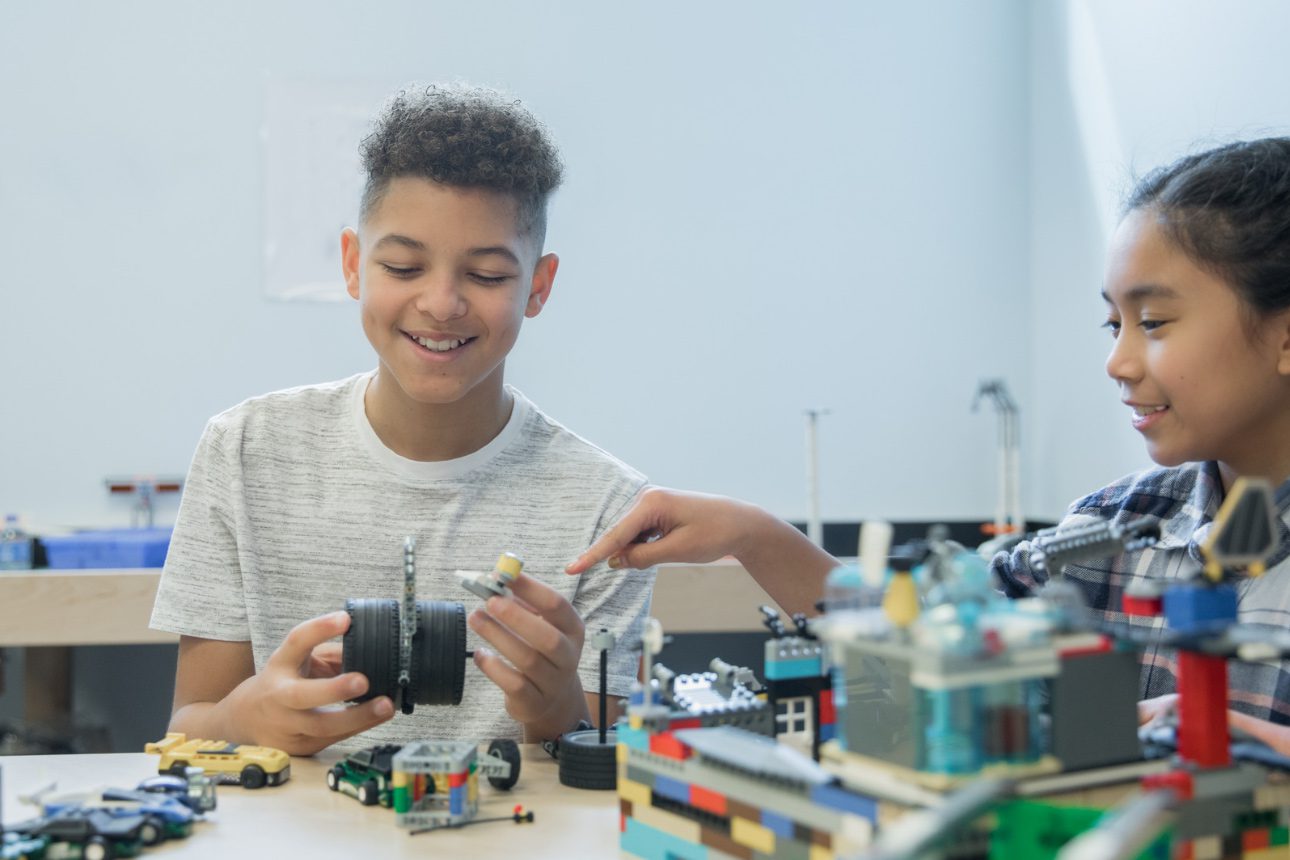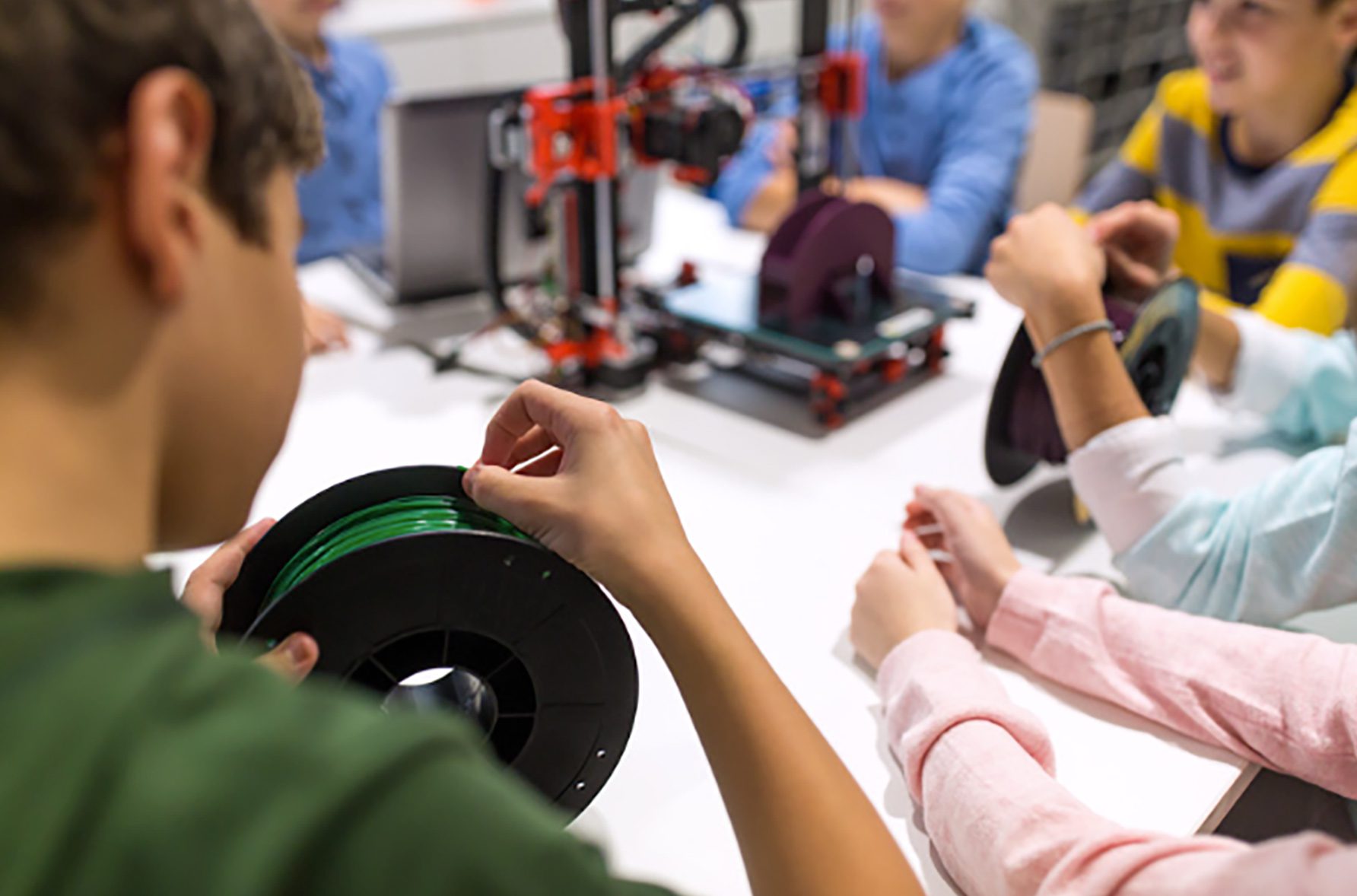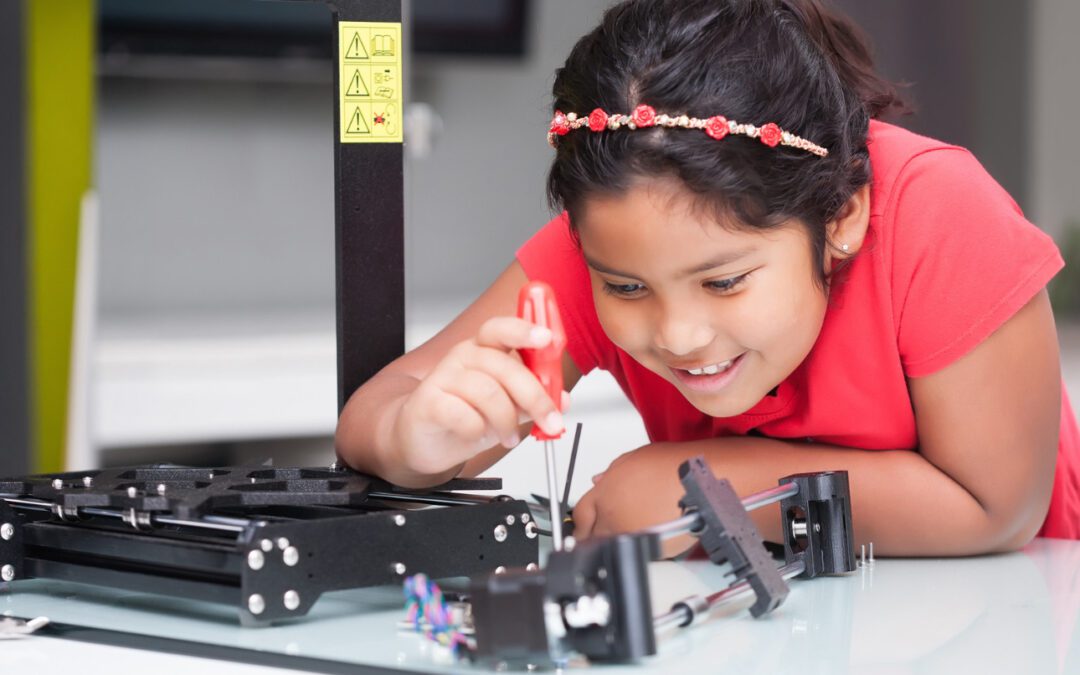What Is a Makerspace?
Communal workshops are nothing new, but for at least the last fifteen years, groups of craftspeople, programmers, or others with similar interests have come together to work alongside one another in what are called makerspaces. A makerspace can be either virtual or a physical location—housed in a public library, school, or even a museum—where people meet to work on their projects. Members of makerspaces often share ideas, tools, and processes, and may collaborate on projects together.
Makerspaces for adults have been popping up in communities all over the world, and similar spaces for children offer unique opportunities for young people to learn from each other while experimenting with tools that may be too costly or cumbersome for most people to own privately.
While makerspaces can be dedicated to any practice or craft, STEM- or STEAM-based programs can help kids get acquainted with tools that will aid them inside the classroom and beyond.

Tools and Equipment for Kids’ Makerspaces
Makerspaces for kids can be tailored to a certain activity or tech, or might have a range of tools and materials for experimentation. Common tools that can be found in many STEM-based makerspaces are 3D printers, laser cutters, specialized software, and robotics and electronics equipment. These tools can give kids hands-on experience with engineering, math, and science concepts while sparking their creativity. Traditional craft supplies may play a role, or reclaimed materials might be on hand to provide an important sustainability lesson.
Tools like Tinkercad can help teach kids how to design in 3D, write programs, and build objects with electronic components.
What Are the Benefits of a Makerspace for Kids?
Aside from offering kids a chance to explore technology or tools they may not otherwise have access to, these spaces foster an environment where kids can hone critical soft skills like creative thinking, teamwork, and conflict resolution.
With a focus on hands-on learning, a makerspace can also promote a child’s sense of agency, giving them the feeling of satisfaction when completing projects that interest them as they watch their ideas progress from conception to fruition.1
Whether kids collaborate on a single project or work independently alongside other children on their own, sharing tools, resources, and ideas in a makerspace can teach them valuable lessons they will carry with them throughout their lives.

What Is the STEMful MakerSpace?
At STEMful, our MakerSpace Curiosity Creators program is held in a designated space that will allow students to create, problem solve, and develop skills, talents, thinking, and mental rigor through hands-on projects and builds. Legos, stop-motion animation software, levers, circuits, LEDs, 3D printing, hand tools, and audio-visual equipment are some other tools we may use in our program. Tinkercad is also another tool that students will explore. It is an online 3D modeling software that will allow students to bring their ideas to life. As they gain proficiency with Tinkercad, they will be able to progress to printing models on a 3D printer. The variety of tools is what makes the MakerSpace Creator program unique and rewarding to our students.
Interested in getting your child involved in a makerspace this school year? Sign your third, fourth, or fifth grader up for STEMful’s new after-school Curiosity Creators program, focusing on STEMful’s MakerSpace and Tinkercad.
- “How Hands-on Learning Impacts STEM Learning,” National Inventors Hall of Fame, accessed August 29, 2023, https://www.invent.org/blog/trends-stem/hands-on-STEM-learning.

